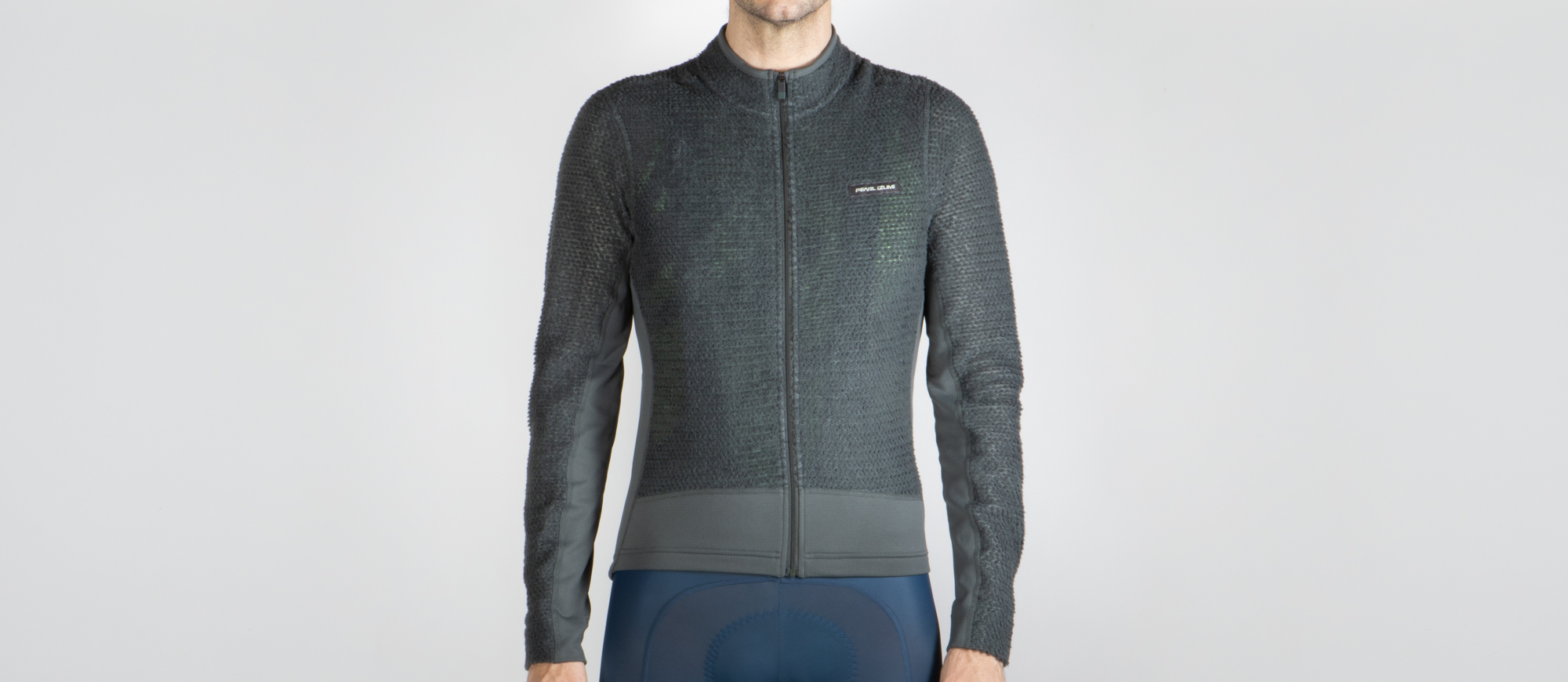Cyclingnews Verdict
Polartec Alpha insulation is the insulation of choice on a variety of the best jackets available. Pearl Izumi turned it into a garment that takes the place of a long sleeve jersey. It's already an innovative idea and Pearl Izumi executed it beautifully.
Pros
- +
Perfect pocket design
- +
Just right length
- +
The thumb pocket keeps the sleeves in place as a jacket slides on
- +
Neckline feels right
- +
Polartec alpha keeps your body dry while being highly insulative
Cons
- -
Unusable without a shell
You can trust Cyclingnews
If you want to stay warm and comfy in terrible weather, layering is the answer. An excellent shell and just the right base layer for the conditions are two pieces of the puzzle. The third is a mid-layer and, unfortunately, it's the toughest of the three to get right. Jackets are the most visible pieces and there is a ton of innovation with lots of choices. Base layers are a bit less sexy but there are a lot of choices there as well. When it comes to the mid-layer though, there are far fewer options available. For most people, the solution is to look through the best cycling jerseys and choose the right long-sleeve thermal jersey.
Pearl Izumi has joined a small group offering a whole new choice. Thermal jerseys can work great but the Pearl Izumi Pro Alpha Layer doesn't try to fill more than one need. This is an optimised piece designed only as a mid-layer. Is it good enough for the worst weather you want to ride in though? It sure seems awfully lightweight so I put it to the test. If I looked out the window and saw sideways rain, I grabbed a shell, a base layer, and the Pro Alpha Layer and headed out to see how it faired. Now that I've spent some time with it, I'm ready to share the details. If you are looking for an innovative mid-layer option to pair with one of the best winter cycling jackets, keep reading to see if this is the piece for you.
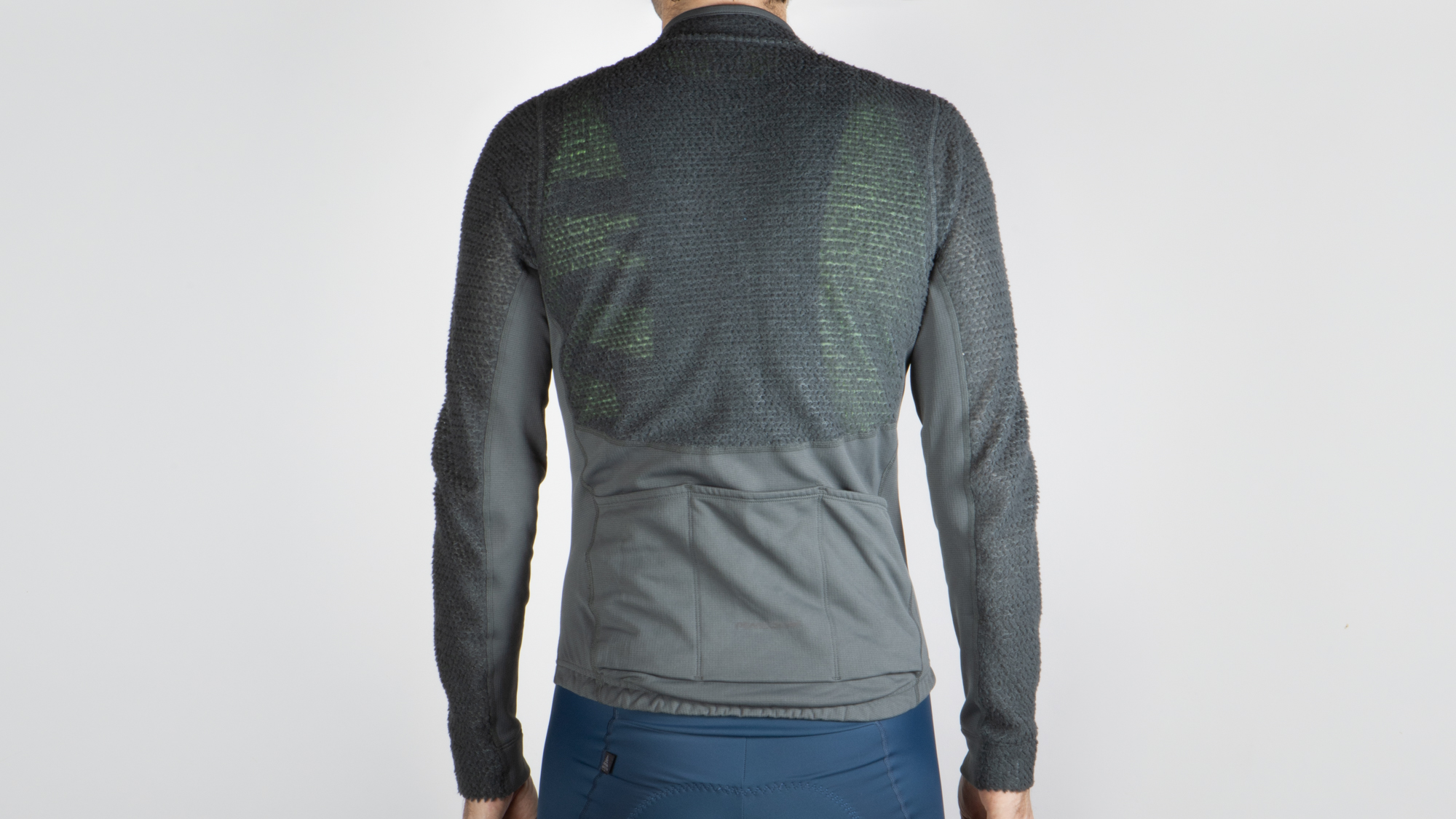
Design and aesthetics
At its core, the Pearl Izumi PRO Alpha Layer is a thermal jersey. That's the way it fits and looks but it's only the start of investigating the design. Consider it a frame of reference, and what's different is the material choices. Instead of any number of more commonly seen materials. Pearl Izumi is using Polartec Pro Alpha for the bulk of this jersey.
That design choice is what colours the rest of the decisions. Polartec Alpha is something of a wonder material if you are looking for a lightweight material that's exceptionally warm. It consists of a mesh backing with lofted fibres attached. Just that part is enough to open the design process for outerwear manufacturers in ways that down or Primaloft materials can't. There's none of the bulk associated with those materials but just as much warmth.
The second part of Polartec Alpha is where it really shines though. The individual fibres are hydrophobic and unable to hold water. It also benefits from the openness of the mesh backing. The warmth that Polartec Alpha provides comes attached to a breathability that no other material matches. It will not hold water and acts as a layer of warm air more than an actual material.
That airiness also means Polartec Alpha isn't used as a standalone layer. Sportful is a frequent user that tends to pair it with other Polartec softshell fabrics but Rapha has also used it paired with hardshell options. The most extreme winter jacket Rapha has ever offered paired Polartec Alpha with a Shakedry outer and there are a couple of others as well. Pearl Izumi designed a product that takes the insulation of those jackets and separates it out. Choose whatever shell you like and the PRO Alpha layer provides your warmth.
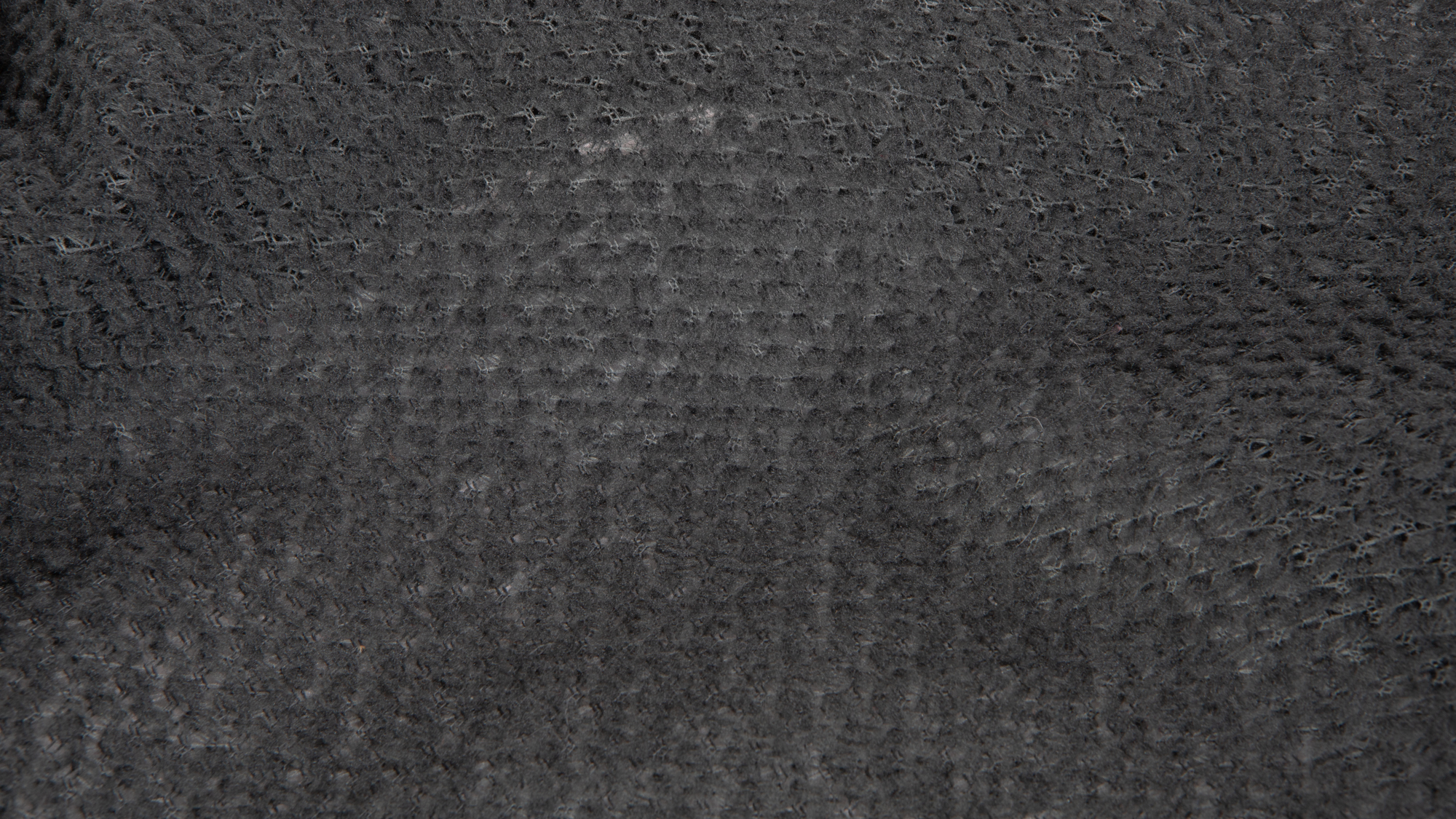
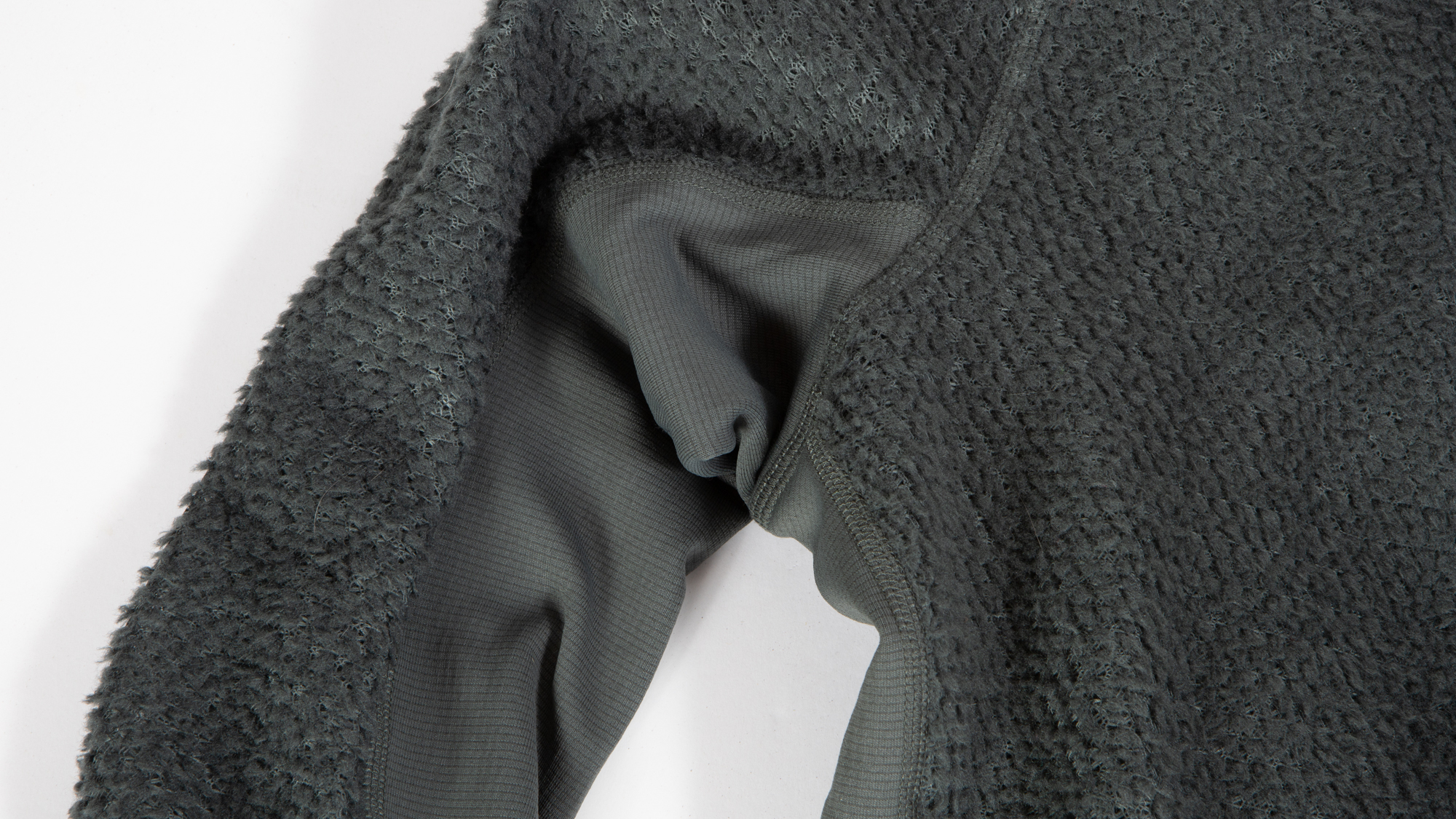
Aside from the airiness, the real design constraint seems to be the lack of stretch in Polartec Alpha. This is something anyone designing a jacket with Shakedry has had to solve but Pearl Izumi had to do it here for a long sleeve jersey. The chosen implementation is to use recycled polyester with five per cent Spandex everywhere the jersey needs to stretch.
The latest race content, interviews, features, reviews and expert buying guides, direct to your inbox!
If you start at the waist, there's a "seatbelt band" that wraps around to the rear. In the front, the hem is only a simple doubled-over bit of this material. In the rear the hem adds elastic and silicone grip material. The non-Alpha materials continue up and envelop the three pockets plus a bit more to give stability above. The pockets themselves are all wide enough for a hand and have bellows at the bottom making plenty of room for expansion. There's a very small, reflective, Pearl Izumi logo in the centre.
The other addition of the stretch fabric starts at the side panels. From there, it continues and makes up the entirety of both side panels plus the underarms and a strip on the underside of the arms. It finishes at the hem of the wrist where you'll find a small thumb pocket to aid in keeping the sleeves where they should be when donning a jacket.
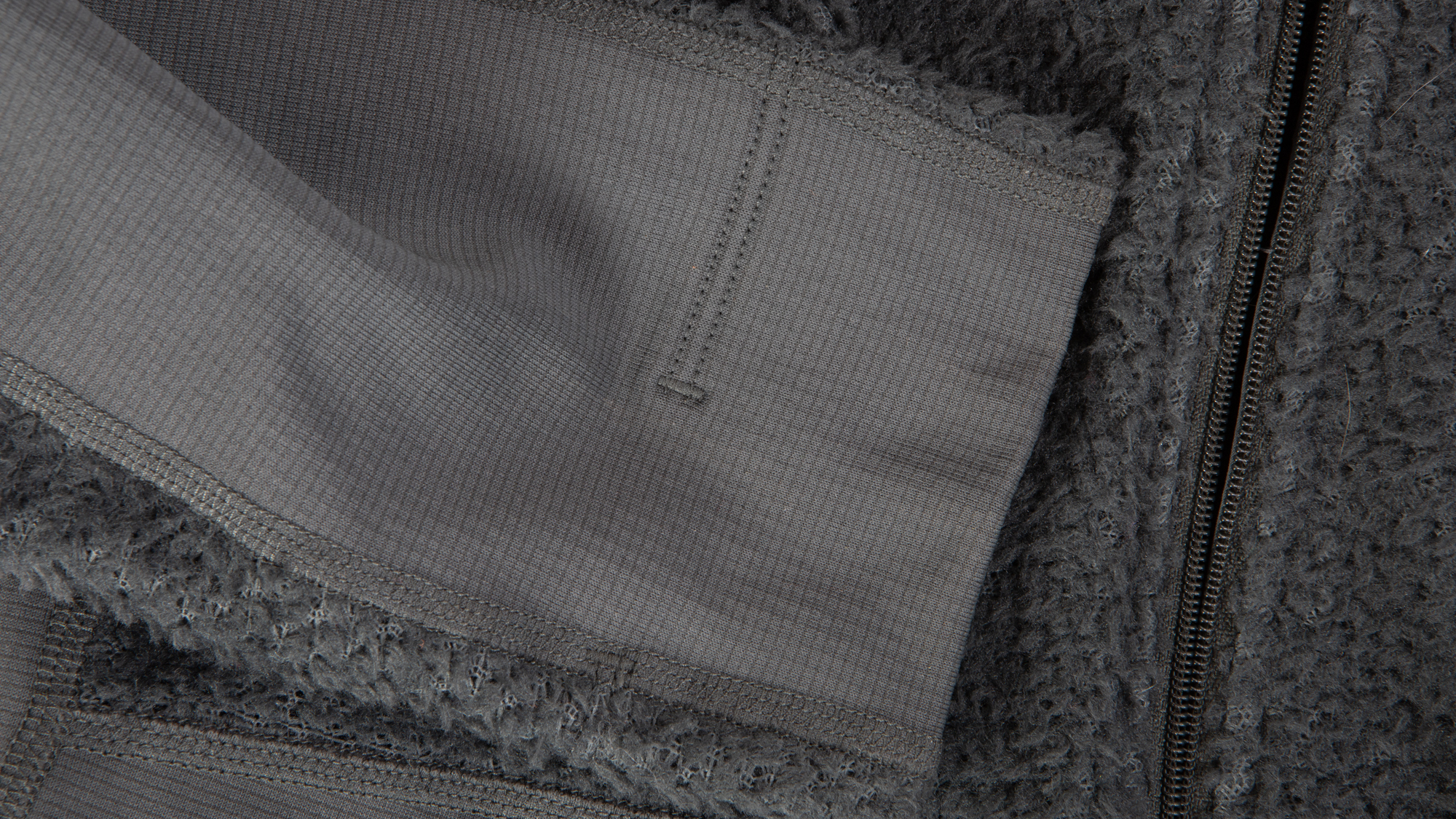
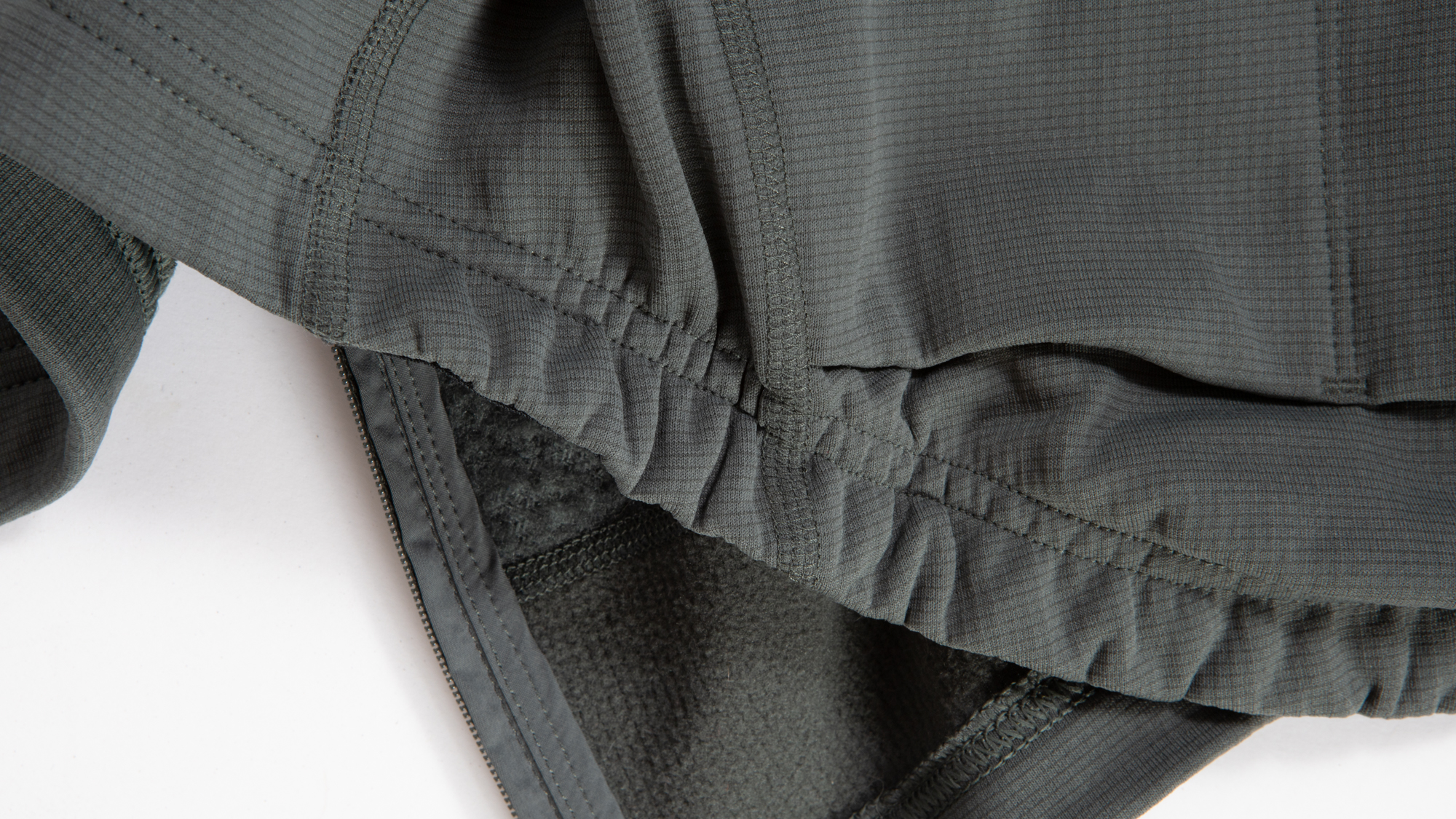
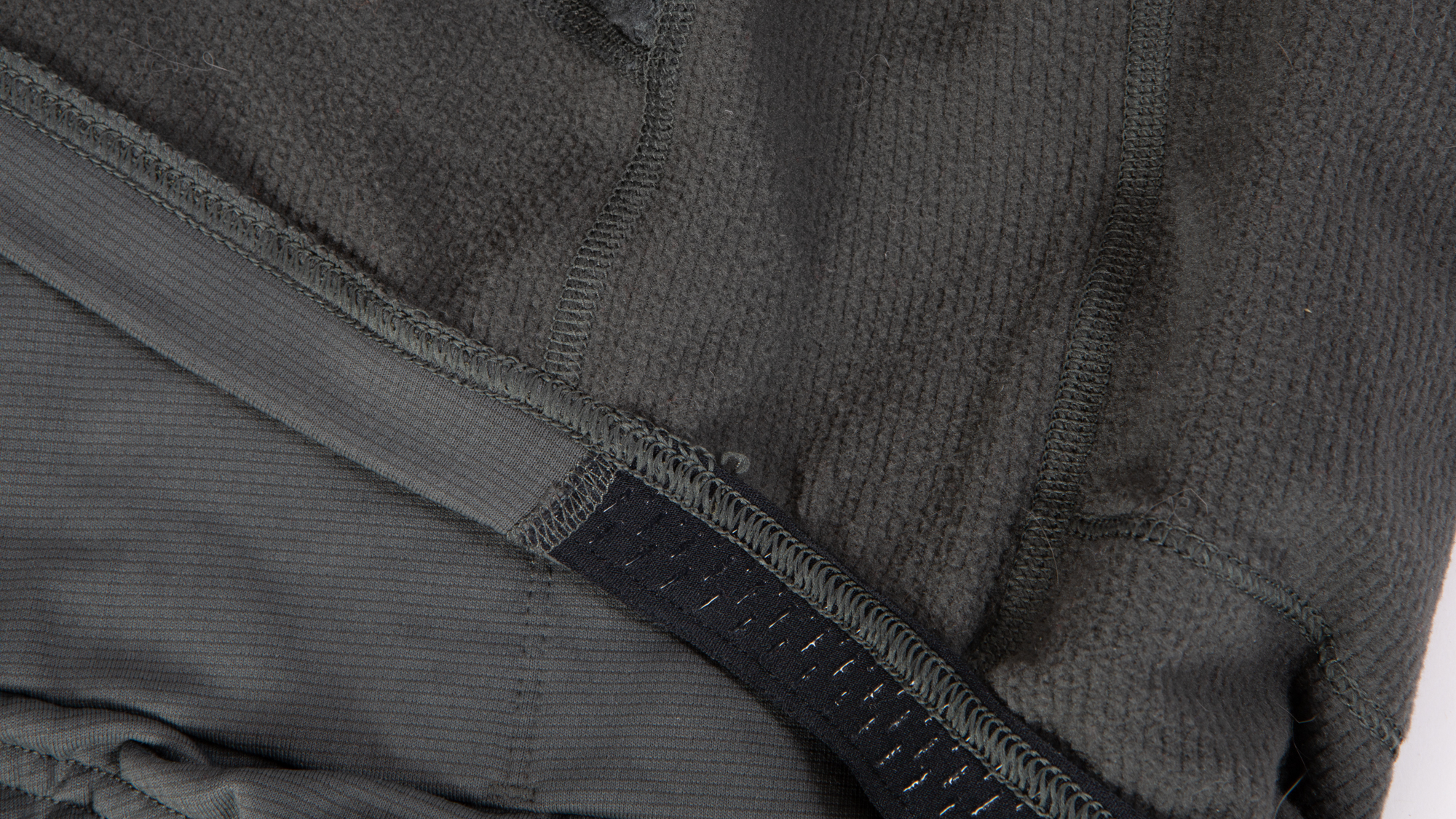
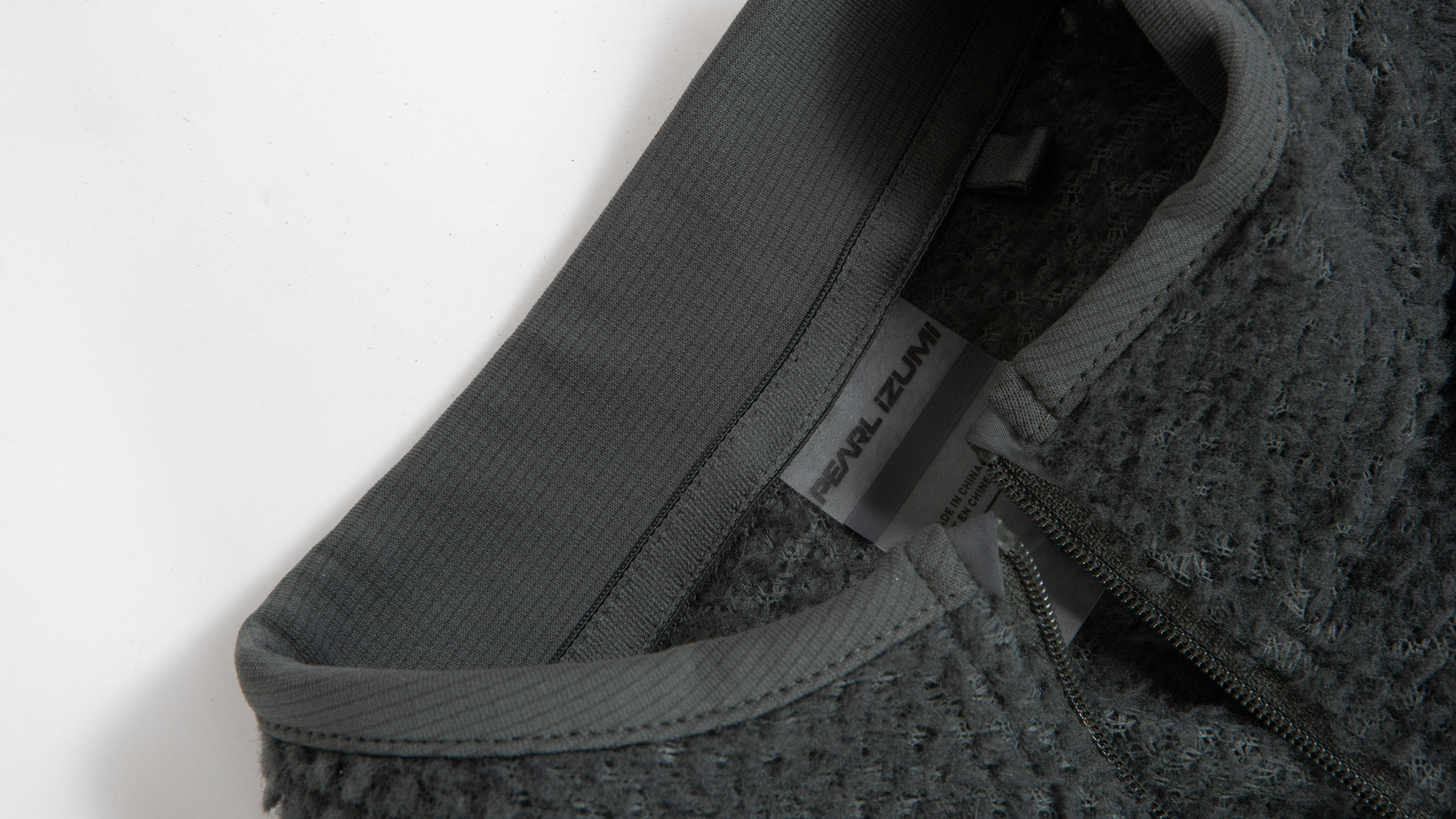
Performance
The Pearl Izumi PRO Alpha Layer is a piece that almost slipped into my rotation without any notice. The angle I took with the best winter cycling jackets buyers guide was all about layering. Then I did a very deep dive on Shakedry and part of that discussion was all about layering strategies. As the winter has progressed, I've continued to explore different strategies and options for shell designs. Each time I went out for a test I had to grab a mid-layer and before long it was always the PRO Alpha layer. My focus was elsewhere though and that fact barely registered. At some point, it occurred to me that the mid-layer deserved its own deep dive.
The truth is, I liked this piece right away because of the fit. It's comfortable and low bulk. When you stand still with the hem all the way down, it looks great and it doesn't creep up as you ride. There are no weird bulges or anything uncomfortable and when you reach back to the pockets, they are right where they should be. Adding all my ride gear to the pockets doesn't faze them and they stay right where they should. If that's where things ended, I would already have good things to say about the PRO Alpha Layer.
As I used it more and more another trend began to emerge. No matter how cold it was when I ventured out, I remained comfortable even as I jumped between different shell options. Most recently, 1.5-degree C was no problem when paired with a Shakedry jacket and an Assos winter baselayer. Given that I try to avoid snow and ice during my winter riding, that's almost as cold as I would ever try to brave. With only modest supporting layers, the Pearl Izumi PRO Alpha layer was more than up for the challenge. Don't forget, that's done with comfortable tailoring and excellent pockets.
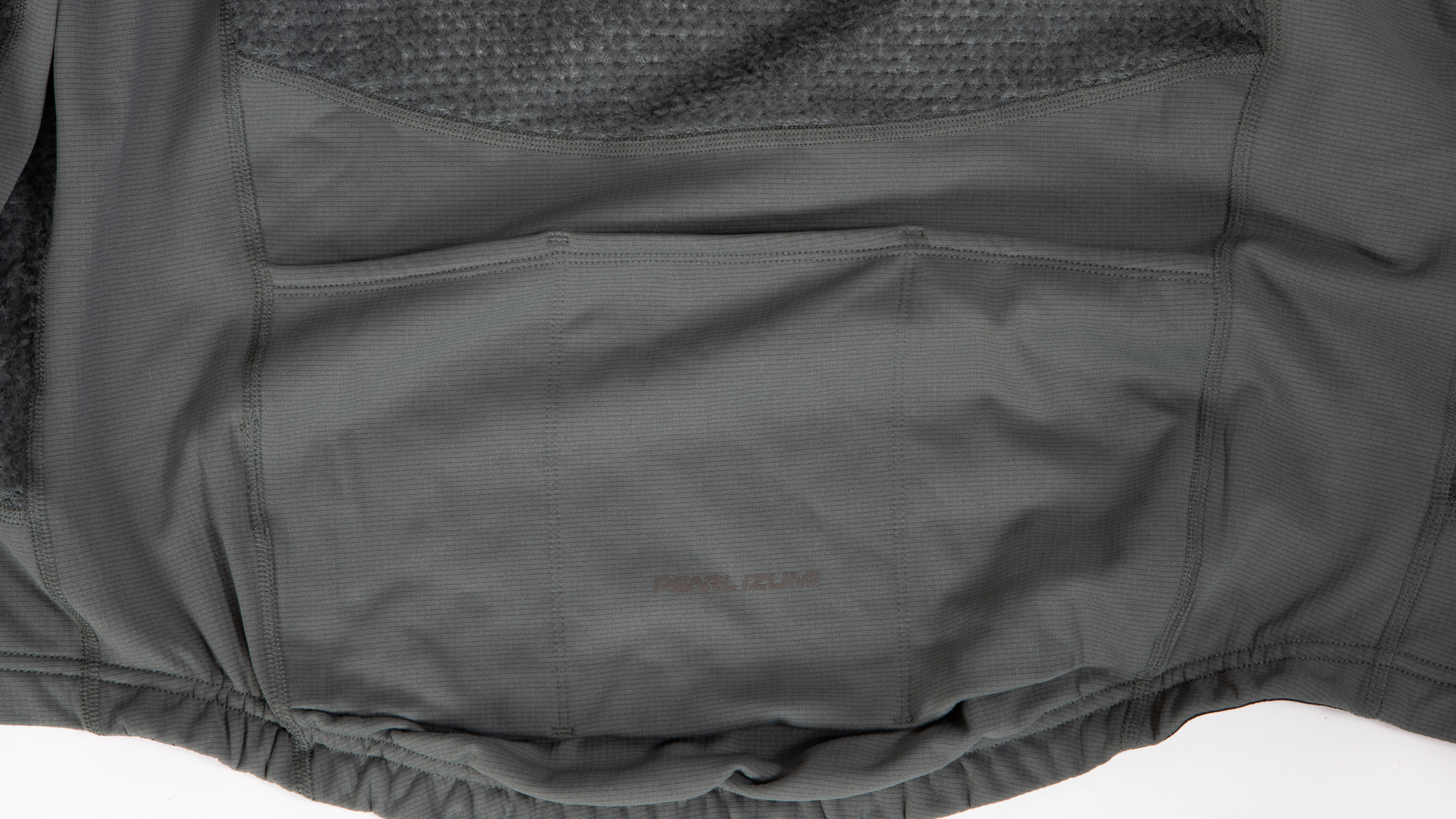
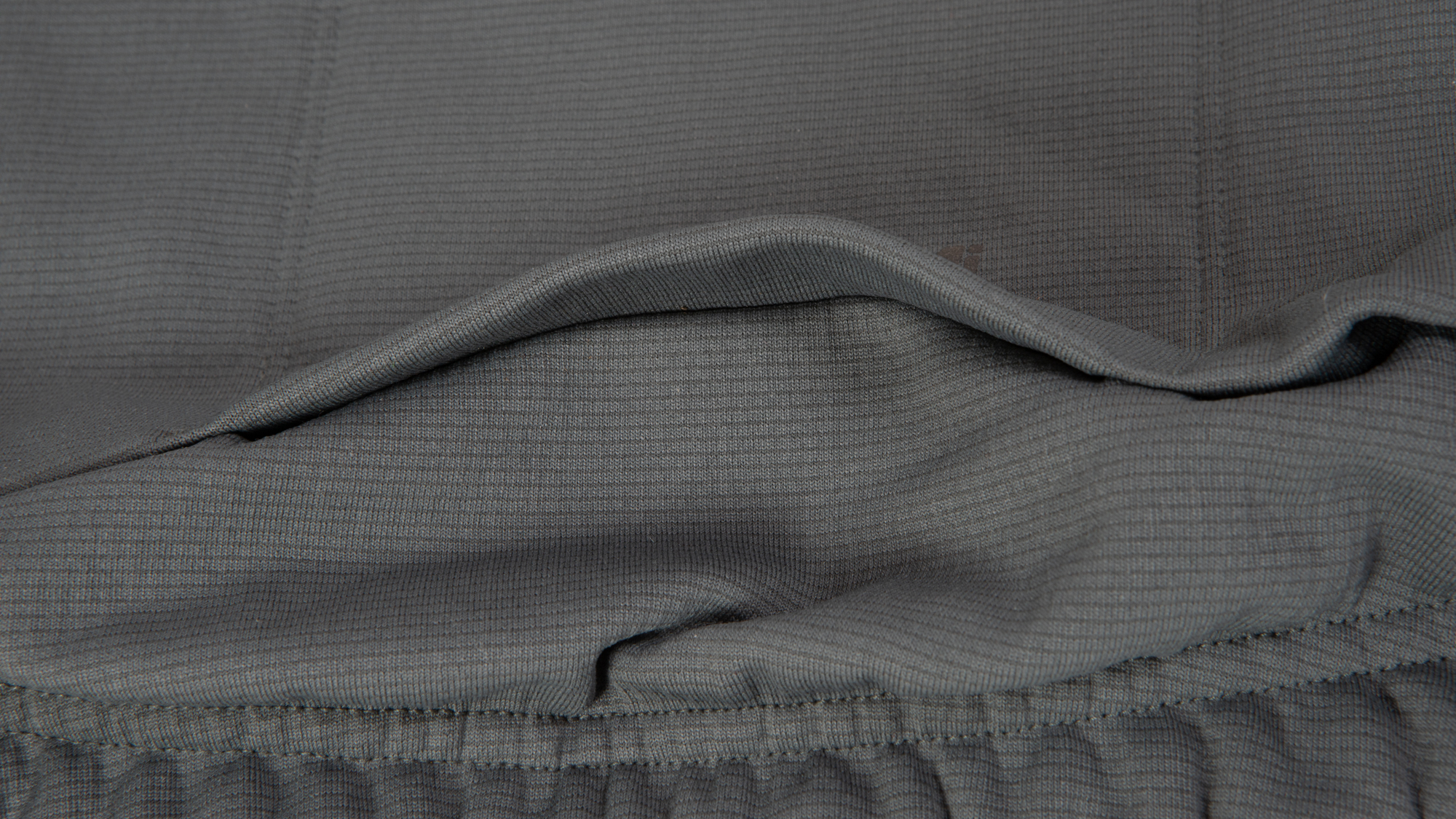
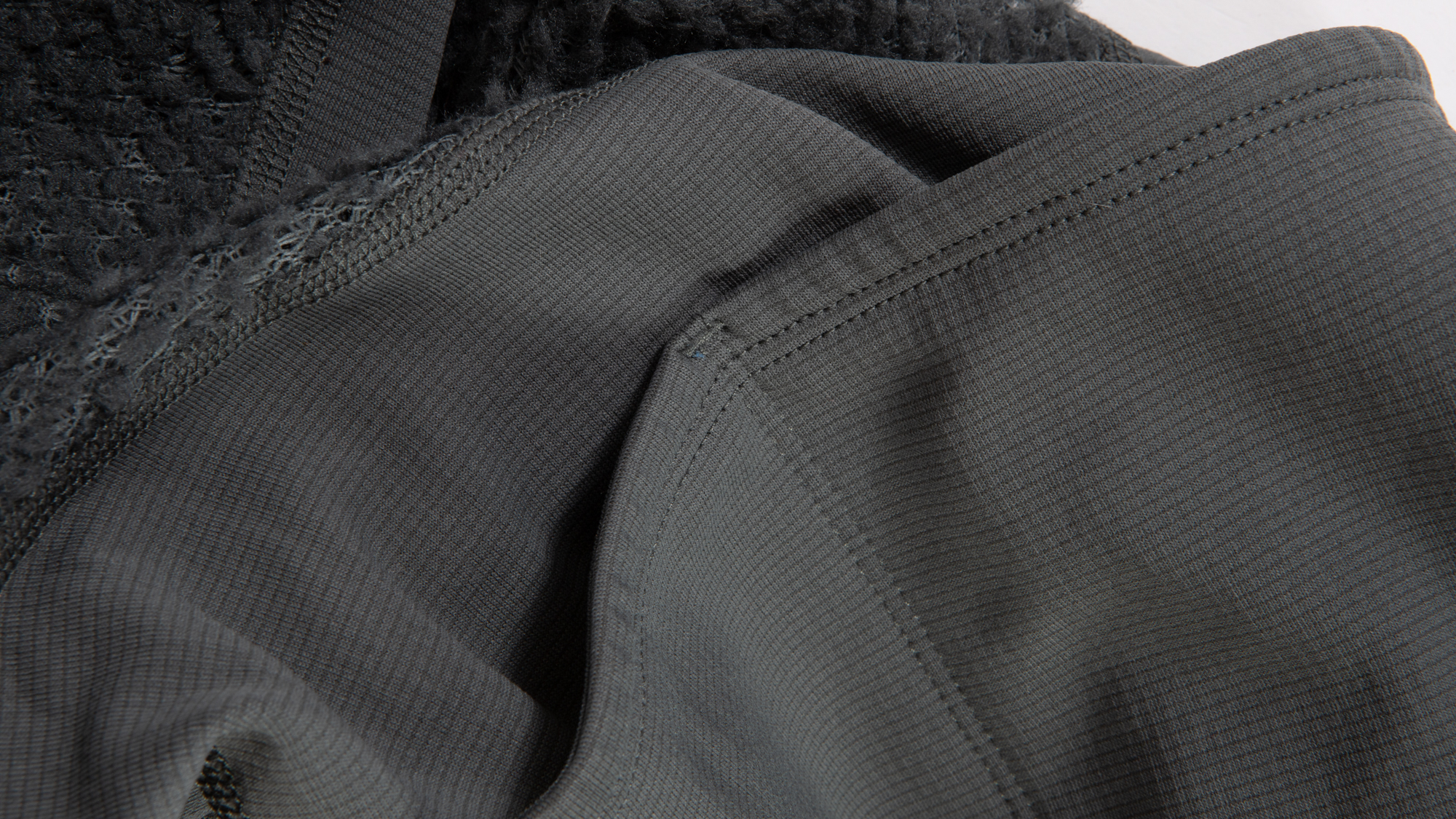
This wasn't my first experience with Polartec Alpha. What was new was having it in a format that lent to objective testing with varied shell jackets. In the past, the performance was always tied to the outer face of a jacket. Now, I could see the technology shine on its own. It weighs 166 grams for a size small yet it outperforms more expensive long-sleeve jerseys that add at least 50 grams of insulation.
Even with this evidence, I might have contributed the performance to the shell performance but there is another piece. First, understand that staying warm is all about staying dry. Sometimes that means keeping the rain out but frequently it also means letting perspiration out. I've intentionally been testing the best shell options available but checking the mid-layer at the end of a ride, the pieces that aren't Polartec are wet. The bulk of the PRO Alpha layer is Polartec though, and each time it's dry. The Polartec Alpha panels are efficiently passing perspiration to the shell membrane while less advanced materials can't keep up. The genius here is recognizing how good Polartec Alpha is and then figuring out how to make a standalone garment from it.
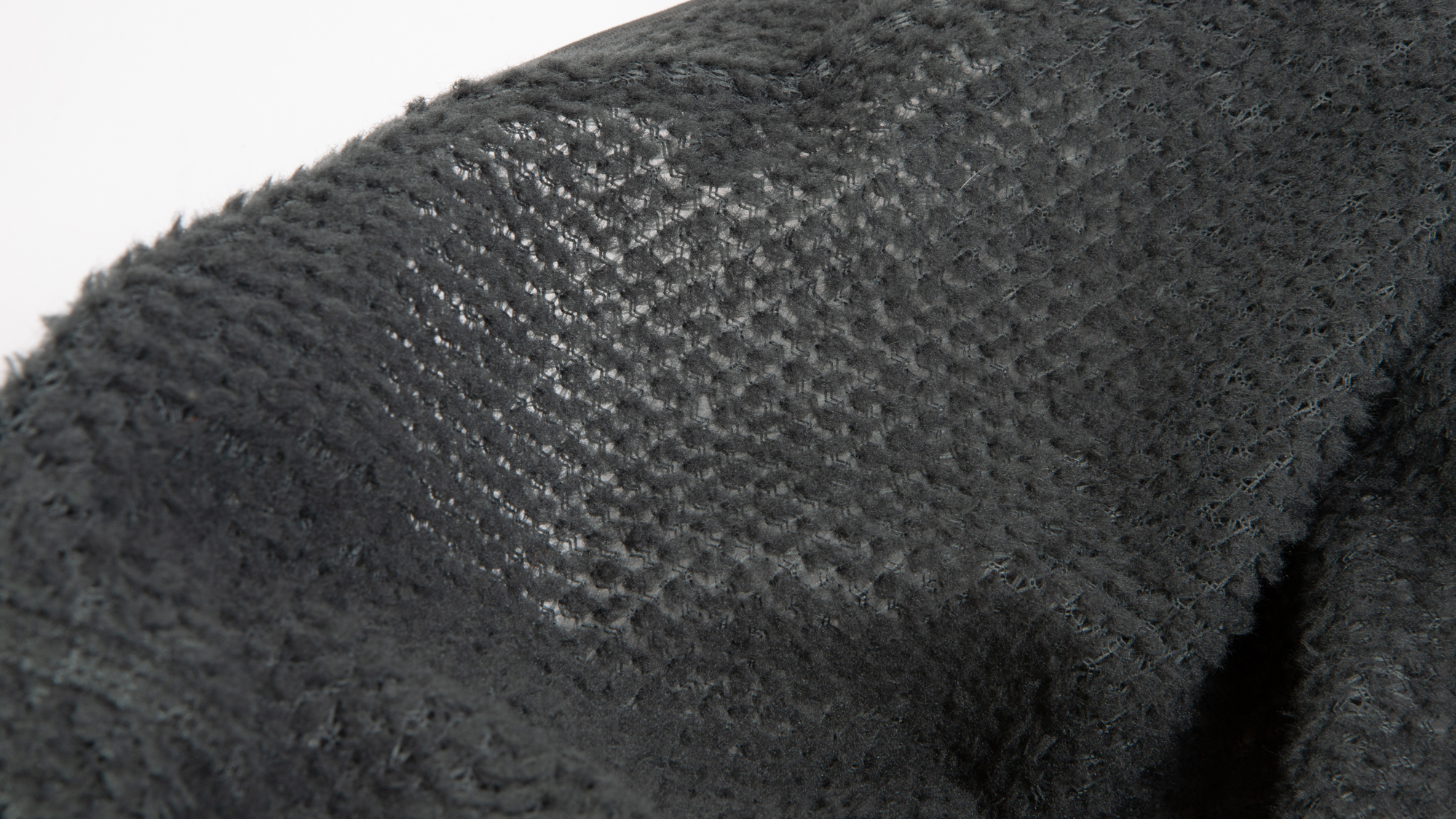
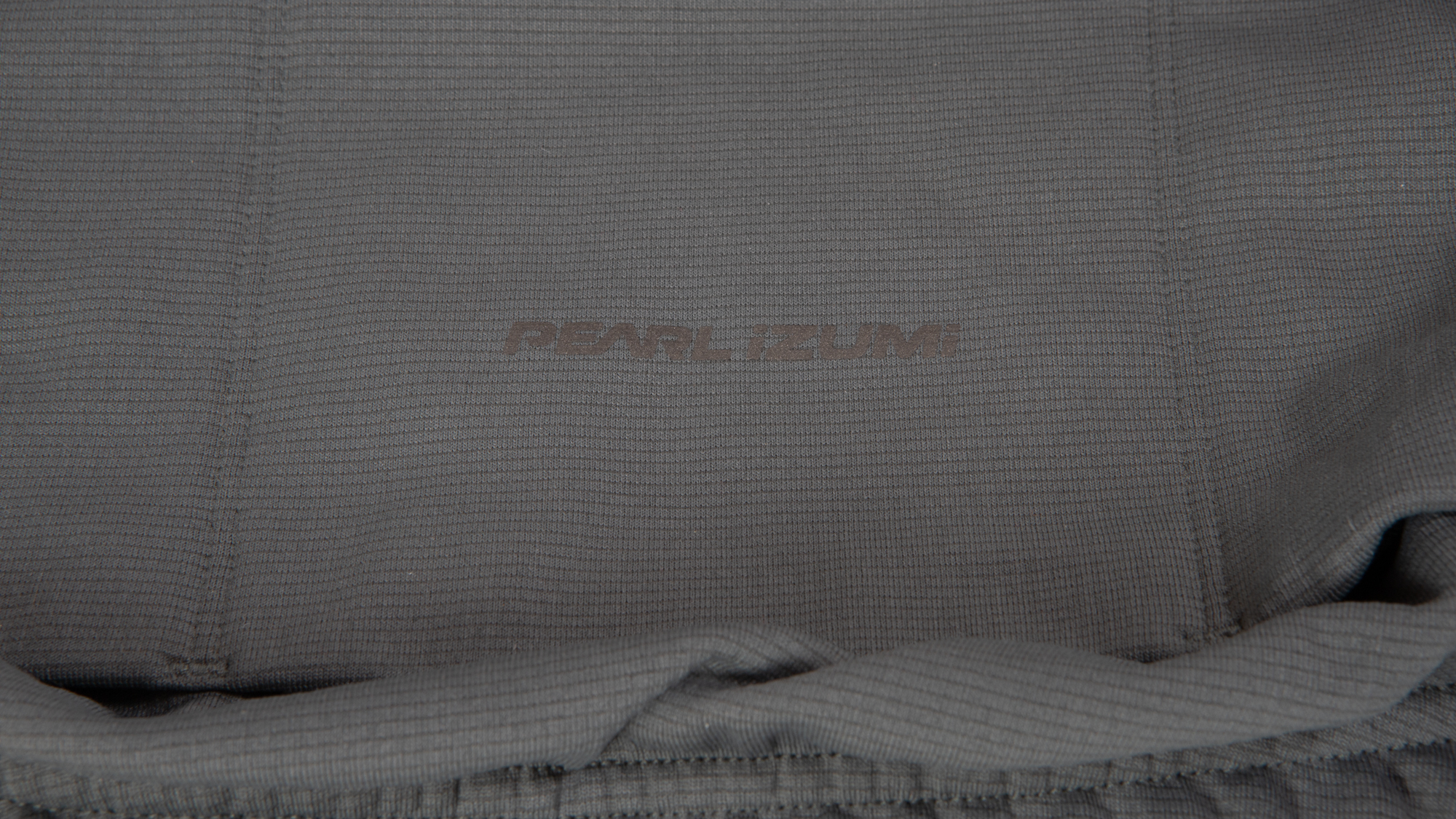
Verdict
My role is to test things and pick them apart. I share details about the smallest missteps not because I always think they completely ruin a design, but because someone else might. Cyclists are an opinionated group and once something works, most of us prioritize that feature in the future. What doesn't matter to me might matter to someone and there's almost always something to critique. I'm struggling here though.
The reality is that the Pearl Izumi PRO Alpha Layer is a very simple design. There's not a whole lot to pick apart because conceptually they've just taken the Polartec Alpha technology and built a jersey out of it. There were certainly opportunities to miss the landing but by getting the tailoring and pockets right, Pearl Izumi nailed it. Then they put a reasonable price tag on the whole package. That makes it tough to pick apart.
The only thing I've come up with is to make sure you understand this piece is unusable on its own. You could wear it without a shell, of course, but it won't do anything. Hold it up to the light and you can easily see through it. Without a shell, it will hold no warmth and offer no protection. Even though most long sleeve jerseys don't stop the wind, they still add a bit of warmth and protection. This one doesn't. I'm not sure that's actually a negative but it may be to someone so I'm sharing it. Otherwise, Pearl Izumi took a simple idea, that no one else seems to have thought of, and executed it well. Go get one.
| Design and aesthetics | The design is brilliant but Polartec Alpha isn’t a high style look. | 9/10 |
| Thermal management | The best low-bulk insulation on the market right now | 10/10 |
| Storage | Big stretchy pockets with bellows and they are in just the right spot | 10/10 |
| Comfort and fit | Perfect fit and it’s super comfortable. | 10/10 |
| Value | This only loses a point because it’s hard to pin down a point of comparison. A long sleeve jersey could cost less and depending on your need it might do more. If you are looking for a mid-layer, this is a bargain price and incredible performance. | 9/10 |
| Overall | Row 5 - Cell 1 | 96% |
Tech Specs: Pearl Izumi Pro Alpha Layer
- Price: $160
- Weight: 166g (As measured size small)
- Size availability: S-XXL
- Colour Options: Only available in Urban Sage as of writing
- Materials: 100% Recycled Polyester / 95% Recycled Polyester, 5% Spandex
Josh hails from the Pacific Northwest of the United States but would prefer riding through the desert than the rain. He will happily talk for hours about the minutiae of cycling tech but also has an understanding that most people just want things to work. He is a road cyclist at heart and doesn't care much if those roads are paved, dirt, or digital. Although he rarely races, if you ask him to ride from sunrise to sunset the answer will be yes.
Height: 5'9"
Weight: 140 lb.
Rides: Salsa Warbird, Cannondale CAAD9, Enve Melee, Look 795 Blade RS, Priority Continuum Onyx
